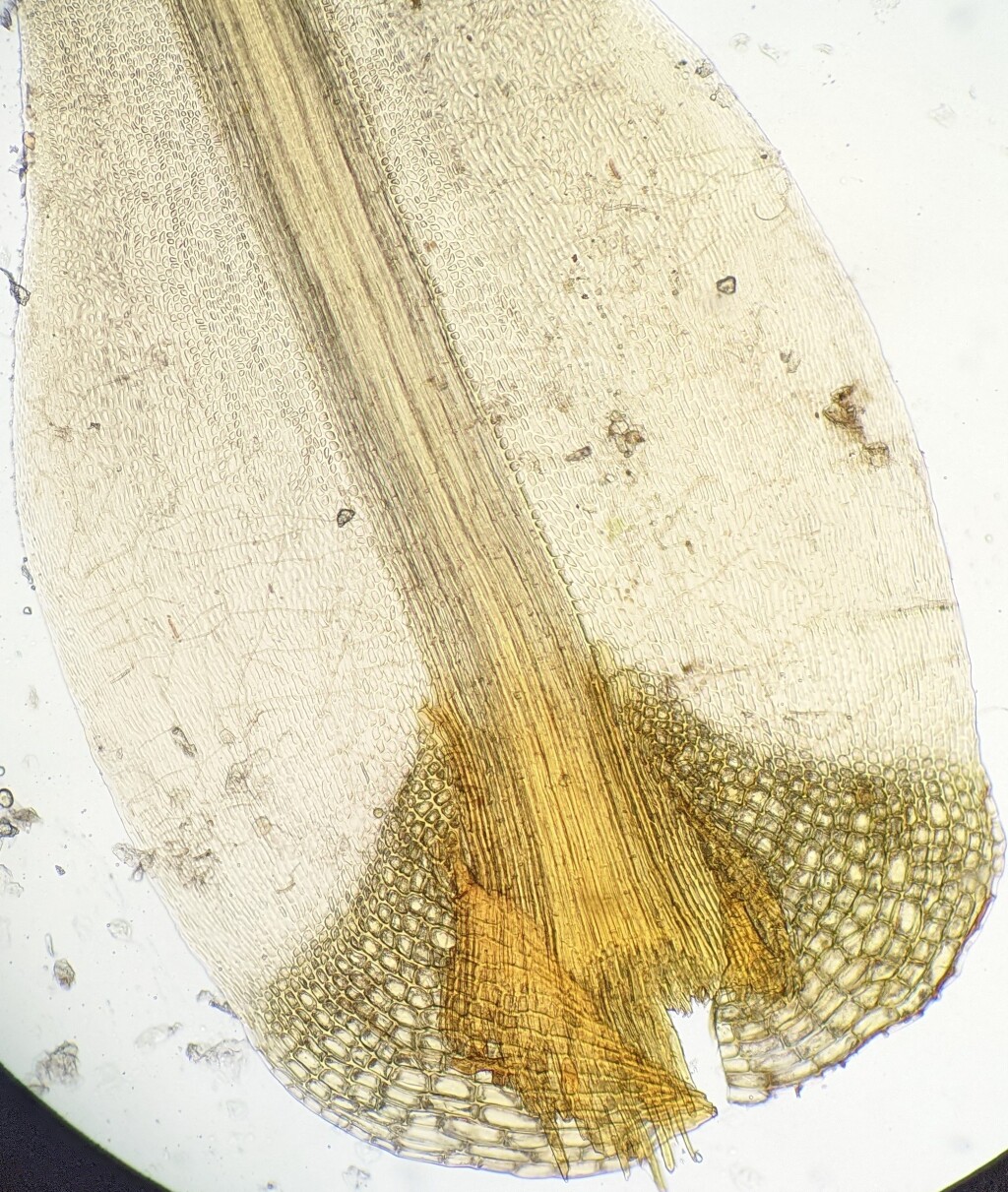Dicranoloma menziesii
(Taylor) RenauldAsexual propagules absent. Turves 2.5–10 cm tall on rocks, logs or tree bases, yellowish-green to dark green. Stems extensively branched, reddish-brown, densely tomentose with pale brown to white rhizoids; central strand present. Leaves falcate-secund, barely altered when dry, narrowly lanceolate, 9.4–14.4 mm long, 0.9–1.2 (–1.5) mm wide, canaliculate to almost tubular near base, carinate toward apex; apex setaceous, almost entirely consisting of costa; costa percurrent to long-excurrent, abaxially with scattered teeth toward apex; margin serrulate in apical 2/3, entire below, plane, with a border of 1–2 rows of cells extending up to or within serrulate part of margin; lamina cells in apical half oblate to oblong, 6–20 μm long, 6–12 μm wide; lamina cells in basal half elongate to short-linear, 18–76 μm long, 5–12 μm wide; alar cells rectangular, 15–53 (–70) μm long, 13–30 μm wide, not inflated, with yellowish brown to brown walls, colourless in young leaves. Seta solitary or rarely paired, 4.5–8 mm long, reddish, darker toward capsule, smooth. Capsule inclined to vertical, cylindric, slightly curved, 2–2.3 mm long. Operculum obliquely rostrate from conical base, 1.6–1.8 mm long.
GipP, OtP, GGr, EGL, EGU, WPro, HSF, HNF, OtR, Strz, MonT, HFE, VAlp. In Victoria mostly south of the Great Dividing Range in wet forests, particularly cool-temperate rainforest. Also QLD, NSW, ACT, Tas and Lord Howe Island. New Zealand, New Caledonia. Juan Fernandez Islands and southern South America. .
 Spinning
SpinningKlazenga, N. (2003). A revision of the Australasian species of Dicranoloma (Bryophyta, Dicranaceae). Australalian Systematic Botany 16: 427–471.


